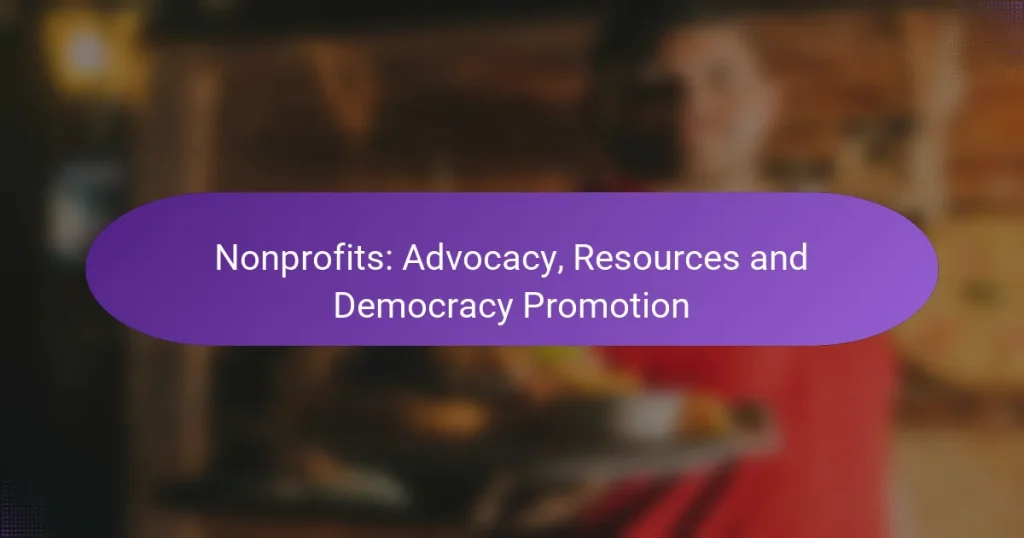Nonprofits play a vital role in advocating for democracy by promoting civic engagement, influencing policy, and raising public awareness. They leverage a range of resources, including funding opportunities and training programs, to enhance their advocacy efforts and maximize their impact. By employing both qualitative and quantitative methods, these organizations can effectively measure their advocacy outcomes and ensure that democratic processes remain accessible to all citizens.
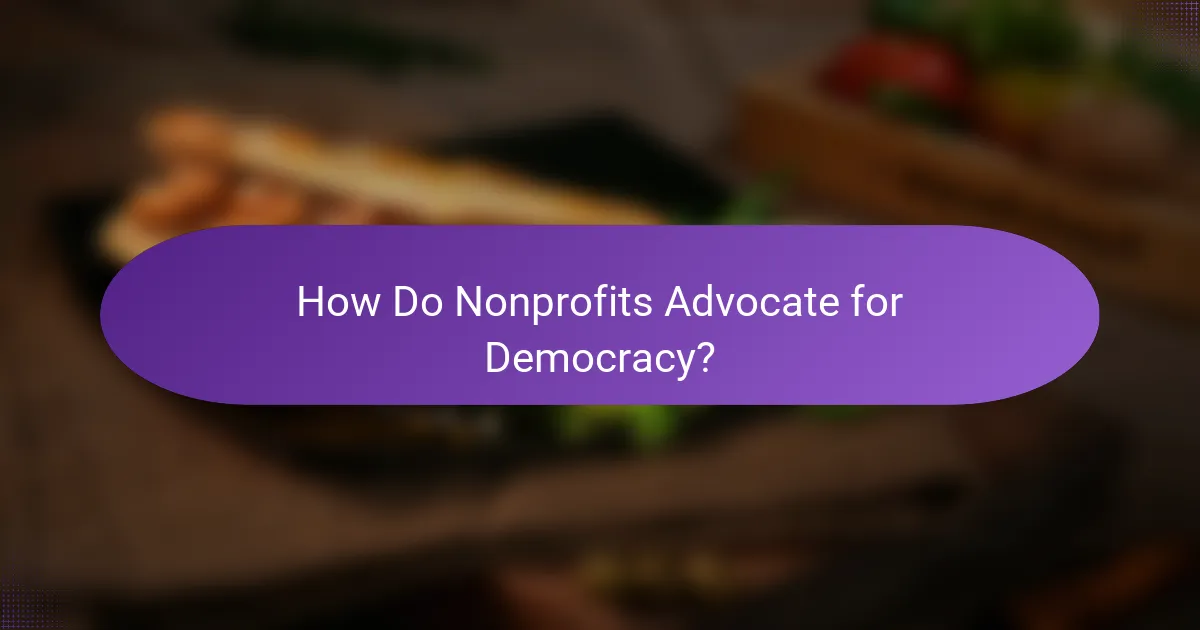
How Do Nonprofits Advocate for Democracy?
Nonprofits advocate for democracy through various strategies aimed at promoting civic engagement, influencing policy, and raising public awareness. These organizations play a crucial role in ensuring that democratic processes are accessible and effective for all citizens.
Grassroots mobilization
Grassroots mobilization involves engaging community members to participate in democratic processes, such as voting or attending town hall meetings. Nonprofits often organize events, rallies, and door-to-door campaigns to encourage civic participation at the local level.
Effective grassroots efforts can significantly increase voter turnout and community involvement. Nonprofits may use social media platforms to reach younger audiences, making it easier to mobilize support for democratic initiatives.
Policy lobbying
Policy lobbying is a direct method used by nonprofits to influence legislation and government decisions. Organizations often employ lobbyists or advocacy teams to communicate their positions on specific issues to lawmakers.
Nonprofits should focus on building relationships with policymakers and providing them with data-driven insights. This approach can help ensure that the voices of marginalized communities are heard in legislative discussions.
Public awareness campaigns
Public awareness campaigns aim to educate citizens about democratic rights and responsibilities. Nonprofits utilize various media channels, including print, digital, and broadcast, to disseminate information about voting, civic engagement, and policy issues.
Successful campaigns often include storytelling elements that resonate with the public, making complex issues more relatable. Engaging visuals and clear messaging can enhance the impact of these campaigns.
Partnerships with civic organizations
Partnerships with civic organizations amplify the efforts of nonprofits in advocating for democracy. Collaborating with local groups can enhance resource sharing and broaden outreach efforts.
These partnerships can take many forms, such as joint events, co-hosted workshops, or shared advocacy initiatives. By working together, organizations can leverage each other’s strengths to create a more significant impact.
Legal advocacy
Legal advocacy involves using the legal system to protect and promote democratic rights. Nonprofits may engage in litigation, provide legal assistance, or advocate for policy changes through legal channels.
Organizations should be aware of relevant laws and regulations that affect their advocacy efforts. Collaborating with legal experts can help nonprofits navigate complex legal landscapes and effectively challenge unjust practices.
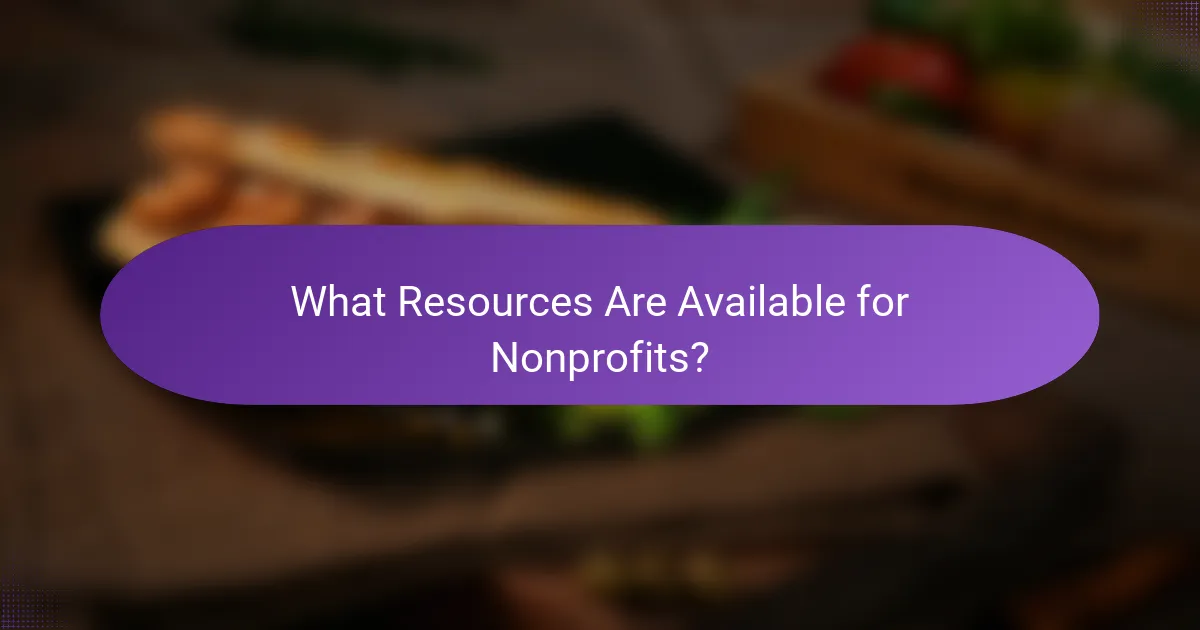
What Resources Are Available for Nonprofits?
Nonprofits have access to a variety of resources that can enhance their operations, advocacy efforts, and overall impact. These resources include funding opportunities, training programs, online libraries, and networking platforms designed to support nonprofit organizations.
Grant funding opportunities
Grant funding is a primary resource for nonprofits, providing essential financial support for projects and initiatives. Organizations can seek grants from government agencies, private foundations, and corporate sponsors. It’s crucial to identify grants that align with your mission and to carefully follow application guidelines.
Many grants require specific documentation, such as a detailed project proposal and a budget outline. Consider using grant databases like Grants.gov or Foundation Center to find suitable opportunities. Be prepared for competition, as many nonprofits vie for the same funding sources.
Training and workshops
Training and workshops are vital for building the skills of nonprofit staff and volunteers. These sessions often cover topics like fundraising, advocacy strategies, and nonprofit management. Local universities, nonprofit associations, and online platforms frequently offer these educational resources.
Participating in workshops can help your organization stay updated on best practices and emerging trends. Look for programs that offer certifications or practical skills that can be directly applied to your work. Networking with peers during these events can also lead to valuable collaborations.
Online resource libraries
Online resource libraries provide a wealth of information, including research papers, toolkits, and case studies tailored for nonprofits. Websites like the National Council of Nonprofits and the Nonprofit Resource Center offer extensive collections of materials that can assist in strategic planning and program development.
Utilizing these libraries can save time and enhance your organization’s effectiveness. Regularly check for new resources and updates to ensure you are accessing the most current information available.
Networking platforms
Networking platforms are essential for connecting with other nonprofits, potential partners, and funders. Websites like LinkedIn, Idealist, and local nonprofit networks allow organizations to share experiences, resources, and opportunities. Engaging in these communities can lead to collaborations and increased visibility.
Consider joining forums or groups specific to your nonprofit’s focus area. Actively participating in discussions can help you build relationships and gain insights from others facing similar challenges. Networking can also open doors to new funding opportunities and partnerships.
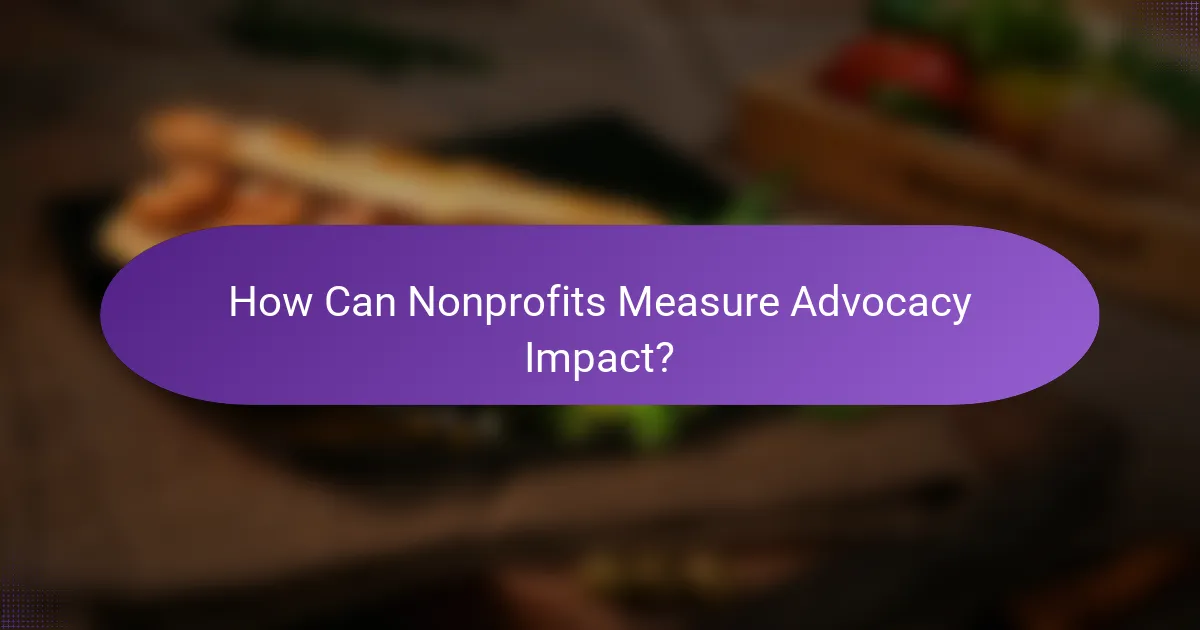
How Can Nonprofits Measure Advocacy Impact?
Nonprofits can measure advocacy impact through various methods that assess changes in public opinion, policy, and community involvement. Effective measurement combines qualitative and quantitative approaches to provide a comprehensive view of advocacy effectiveness.
Surveys and feedback
Surveys and feedback are essential tools for nonprofits to gauge the opinions and attitudes of their target audiences. By conducting pre- and post-advocacy surveys, organizations can identify shifts in perceptions and measure the effectiveness of their messaging. Aim for a response rate of at least 20-30% to ensure the data is representative.
Consider using online platforms for surveys to increase accessibility and participation. Tools like SurveyMonkey or Google Forms can help streamline the feedback process and provide valuable insights.
Policy changes
Tracking policy changes is a direct way to measure advocacy impact, as successful efforts often lead to new legislation or amendments. Nonprofits should monitor relevant legislative bodies and document any changes that align with their advocacy goals. This can include tracking bills, resolutions, or regulatory updates.
Establish relationships with policymakers and attend public hearings to stay informed about potential changes. Keeping a log of these developments can help nonprofits assess the effectiveness of their advocacy campaigns over time.
Media coverage analysis
Analyzing media coverage provides insights into how advocacy efforts are perceived by the public and the press. Nonprofits should track mentions in newspapers, online articles, and social media to evaluate the reach and tone of their messaging. Tools like Google Alerts or media monitoring services can assist in gathering this data.
Focus on both the quantity and quality of coverage. A higher number of articles may indicate greater awareness, while positive coverage can reflect successful messaging. Aim to analyze trends over time to understand the long-term impact of advocacy initiatives.
Community engagement metrics
Community engagement metrics help nonprofits assess how effectively they are mobilizing supporters and fostering participation. Key indicators include attendance at events, volunteer sign-ups, and social media interactions. Tracking these metrics can reveal the level of community involvement and support for advocacy efforts.
Utilize tools like Eventbrite for event tracking or social media analytics to measure engagement online. Setting specific goals, such as increasing event attendance by 20% or gaining a certain number of new followers, can help nonprofits focus their efforts and evaluate success.
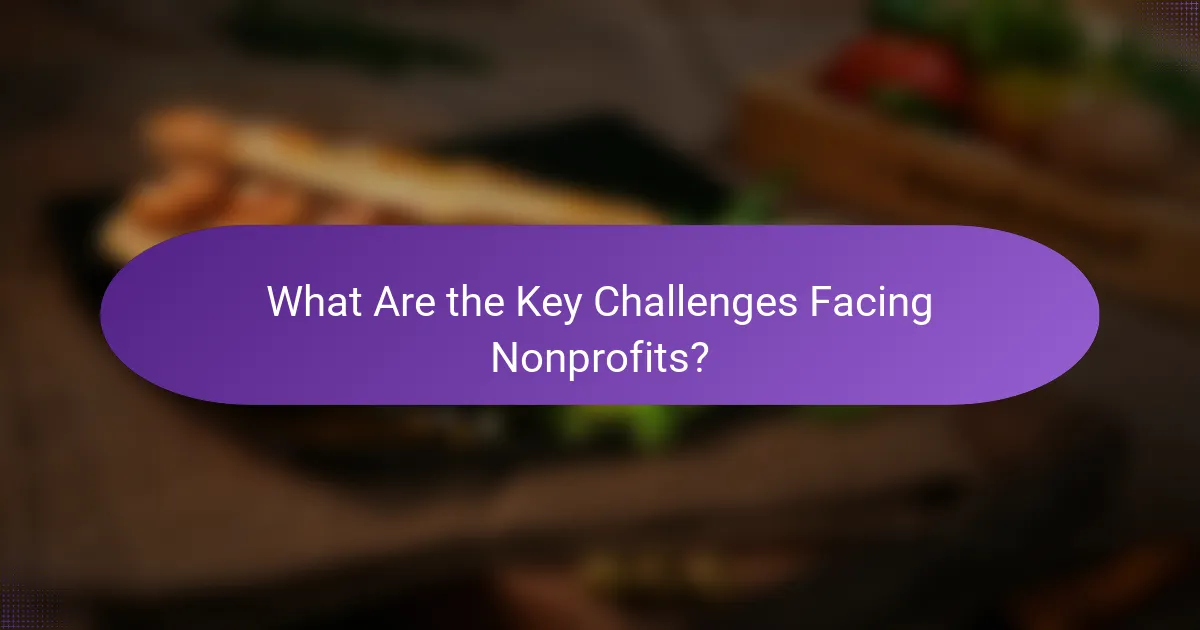
What Are the Key Challenges Facing Nonprofits?
Nonprofits encounter several significant challenges that can hinder their effectiveness and sustainability. Key issues include funding limitations and regulatory compliance, both of which require strategic management to navigate successfully.
Funding limitations
Funding limitations are a primary challenge for nonprofits, often restricting their ability to implement programs and achieve their missions. Many organizations rely on donations, grants, and fundraising events, which can fluctuate significantly based on economic conditions and donor priorities.
To address funding limitations, nonprofits should diversify their revenue streams. This can include exploring corporate sponsorships, applying for various grants, and developing membership programs. Establishing a solid donor base can also provide more stable financial support.
Regulatory compliance
Regulatory compliance poses another major challenge for nonprofits, as they must adhere to various local, state, and federal laws. This includes maintaining tax-exempt status, filing annual reports, and following specific fundraising regulations, which can vary widely by jurisdiction.
Nonprofits should stay informed about the relevant regulations affecting their operations. Regular training for staff and volunteers on compliance issues is essential. Additionally, consulting with legal experts can help ensure that the organization meets all necessary requirements and avoids potential penalties.
